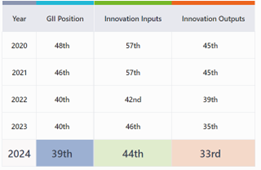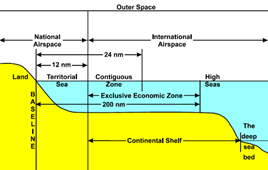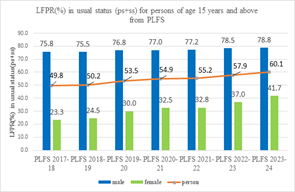Saturday, 28th September 2024
50 years of Indian Microfinance Sector
Why in the news ?
- The Indian microfinance sector marks its 50th anniversary, having begun in 1974 with the establishment of the SEWA Bank in Gujarat, providing financial services to poor women.
About the Microfinance (Microcredit):
- About:
- Nobel laureate Muhammad Yunus founded Grameen Bank in Bangladesh in 1976, laying the foundation for modern MFIs.
- RBI is the regulatory body for MFIs operating in the country.
- The Malegam Committee (2010) constituted by the RBI recommended a general framework for regulation of NBFCs –MFIs.
- It provides financial services such as low-cost loans to marginalized and poor individuals without formal banking services.
- It offers a wide range of services including banking, banking and microinsurance.
- Significance of Microfinance Sector:
- Potent tool for financial inclusion and socio-economic transformation.
- Empowerment of Women through Self Help Groups.
- Poverty reduction and overall rural development
- Challenges in the microfinance sector:
- Increased transaction costs for MFIs: Along with expanding services for many of the smaller borrowers.
- Lack of collateral: makes it harder to get the offer Cost.
- Increased interest: then charged by commercial banks.
- High cost of borrowing: MFIs often struggle to make cheap returns on financial provision.
- Other: Low-income digital literacy among the poor and the borrowers; has remained dependent on creditors.
- Government Initiatives for Microfinance in India:
- SHG-Bank Linkage Program: Aims to increase loans for Self Help Groups (SHGs) and shift their lending from non-income generating to production-based activities.
- Pradhan Mantri Mudra Yojana (PMMY): Offers loans up to ₹10 lakh to small/micro enterprises through banks and NBFCs, categorized as Shishu, Kishore, and Tarun.
- 2024 Union Budget: Increased loan limit under PMMY from ₹10 lakh to ₹20 lakh for those who have successfully repaid loans under the Tarun category.
Source: ORF
Global Innovation Index (GII) 2024
Why in the news ?
- The World Intellectual Property Organization released the Global Innovation Index to help governments to assess innovation-led social and economic changes.

About the Global Innovation Index (GII):
- The Global Innovation Index (GII), co-published by WIPO, Cornell University, and INSEAD.
- Assesses innovation using criteria like institutions, human capital, research, infrastructure, and knowledge diffusion.
Key findings in the report:
- Switzerland tops the ranking, followed by Sweden, the US, and Singapore.
- India climbs to 39th globally out of 133 economies evaluated.
- India ranked first among lower middle-income economies and in the Central and Southern Asia region.
- India's strengths include ICT service exports, venture capital received, and intangible asset intensity.
- GII 2024 Theme: Highlights the importance of social entrepreneurship, which focuses on innovative solutions to social/environmental challenges, prioritizing impact over profit.
Significance of Social Entrepreneurship:
- Economic Contribution: Generates around $2 trillion in global GDP.
- Employment Creation: Supports 10-11 million social enterprises and approximately 30 million social entrepreneurs, helping millions achieve sustainable livelihoods.
- Social Impact: Addresses critical issues like poverty, environmental degradation, and racial and social injustice.
|
About WIPO:
|
Source: : Live Mint
India Signs Agreement on Marine Biodiversity
Why in the news ?
- Recently, India signed an international agreement to protect marine biodiversity on the high seas at the United Nations General Assembly.
Agreement on Marine Biodiversity of Areas Beyond National Jurisdiction (High Seas Treaty):
- About:
- Type: International treaty under UNCLOS.
- Aim: Conservation and sustainable use of marine biodiversity in areas beyond national jurisdiction.
- Key Features:
- Establishes marine protected areas in biodiversity-rich ocean zones under stress.
- Prohibits sovereign rights over marine resources from the high seas.
- Significance:
- Boosts India’s strategic presence beyond its EEZ.
- Supports SDGs, especially SDG 14 (Life Below Water).
- Advances India’s marine conservation, research, and use of traditional and scientific knowledge.
- Key Issues Addressed:
- Fair sharing of marine genetic resources.
- Area-based management tools, including marine protected areas.
- Environmental impact assessments.
- Capacity-building and technology transfer.
|
United Nations Convention on the Law of the Sea (UNCLOS):
About High Seas:
Legal Boundaries of Maritime Zones of Ocean and Airspace:
|
Source: AIR
Textile Sector in India
Why in the news ?
- About 12 textile companies are set to receive the first set of incentive payment under the production-linked incentive (PLI) scheme.
About PLI:
- The PLI scheme, launched in 2021 with a budget of ₹10,683 crore, aims to boost production of man-made fibres (MMF), apparel, MMF fabrics, and technical textiles.
- The Ministry of Textiles has outlined a roadmap to create 4.5 to 6 crore jobs in the textile sector by 2030 and expand the market size to $350 billion from the current $165 billion.
Significance of the Textile Sector in India:
- Economic Contribution: Accounts for 2.3% of India's GDP and 7% of industrial output.
- Employment: Second-largest employer after agriculture, with 45 million direct and 100 million indirect jobs.
- Exports: Contributes 12% to total export earnings; textile and apparel exports stood at $44.4 billion in FY 2023.
- Diverse Segments: Includes handloom, power loom, and mill sectors; India is a leader in cotton, jute, and silk production.
Key Segments of the Textile Industry:
- Cotton Textiles: India is the largest global producer of cotton, with over 30% of the world's production.
- Handloom and Handicrafts: Home to over 4.3 million weavers, preserving cultural heritage and generating rural employment.
- Technical Textiles: Focuses on functional textiles for healthcare, automotive, and agriculture; projected to grow to $23 billion by 2025.
- Man-Made Fibres (MMF): Contributes 30% to the market, including synthetic fibres like polyester, offering durability and versatility.
Current Challenges Facing the Textile Sector:
- Raw Material Fluctuations: Cotton price volatility impacts costs and profitability.
- Technological Upgradation: Many units use outdated technology, requiring modernization for global competitiveness.
- Environmental Concerns: The industry is resource-intensive, requiring eco-friendly practices for sustainability.
- Competition: Faces competition from Bangladesh, Vietnam, and China, which offer lower costs and faster production.
- Regulatory Hurdles: Complex regulatory norms and access to government schemes pose challenges.
Government Initiatives to Boost the Textile Sector:
- PLI Scheme: A ₹10,683 crore scheme to promote man-made fibres and technical textiles, expected to attract ₹19,000 crore in investments and create 7.5 lakh jobs.
- National Technical Textiles Mission: A ₹1,480 crore mission to make India a leader in technical textiles.
- ATUFS: Provides financial support for upgrading machinery, modernising the industry.
- Skill Development Programs: Initiatives like Samarth train 10 lakh youth in textile-related trades.
- MITRA Parks: Seven parks with world-class infrastructure aimed at attracting investments and boosting competitiveness.
Source: BS
Llama 3.2
Why in the news ?
- Recently, Meta has announced its new free and open-source large language model (LLM), Llama 3.2, during Meta Connect 2024.
What is Llama 3.2 ?
- About:
- It is an open-source large language model developed by Meta.
- Features:
- It has both image and text processing abilities.
- It includes voice interaction features, allowing users to engage in conversations with the AI using voice commands.
- This model includes both small and medium-sized variants at 11-billion and 90-billion parameters and 3.2 variants.
- lightweight text-only models at 1-billion and 3-billion parameters that fit into select mobile and edge devices.
- It has vision models and can understand charts and graphs, caption images and locate objects from natural language prompts.
- The bigger model can also pinpoint details from images to create captions.
- Applications:
- Advanced AI applications like AR apps with a real-time understanding of video, visual search engines that distribute images based on content, or document analysis tools that can summarise large portions of text.
Source: FE
Kasturirangan Committee
Why in the news ?
- Recently, the Karnataka government rejected a report of the High Level Working Group on Western Ghats[2013] headed by Dr. K. Kasturirangan.
Recommendations of Kasturirangan Committee:
- It recommended 37%of the total area of Western Ghats as eco-sensitive, making a number of projects/activities eco destructive.
- Following this, the Environment Ministry issued a draft notification in 2014 declaring biologically and culturally diverse areas as Eco-sensitive Areas.
- Report recommended a blanket ban on mining, quarrying, setting up of red category industries and thermal power projects.
- Apart from this, the earlier Western Ghats Ecology Expert Panel (WGEEP) [2011] headed by Prof. Madhav Gadgil recommended 75% Western Ghats be declared environmentally sensitive.
- It was found controversial by many states leading to the appointment of the Kasturirangan committee.
Source: IE
SASTRA Ramanujan Prize
Why in the news ?
- Recently, Alexander Dunn has been awarded the prestigious 2024 SASTRA Ramanujan Prize.
About the SASTRA Ramanujan Prize:
- About:
- Instituted in 2005, the SASTRA Ramanujan Prize is awarded annually by SASTRA University in Kumbakonam, Tamil Nadu.
- Eligibility:
- The prize is conferred annually to mathematicians from across the world who are less than 32 years of age, working in an area influenced by the Srinivasa Ramanujan.
- The age limit is 32 years to commemorate the fact that Ramanujan accomplished a phenomenal body of work in this short span.
- Cash prize:It carries a citation and an award of $10,000.
- Other recipients:Manjul Bhargava and Akshay Venkatesh
- Contribution of Dunn:
- Dunn is being recognized for his outstanding contributions to analytic number theory, particularly his joint work with Maksym Radziwill in solving the Kummer-Patterson Conjecture on bias related to cubic Gauss sums.
- Contributions of Srinivasa Ramanujan:
- Analytical Theory of Numbers: Ramanujan made groundbreaking contributions to the field, especially in number theory and elliptic functions.
- Partition of Whole Numbers: Advanced the study of partition functions, providing formulas and insights into the decomposition of numbers.
- Hypergeometric Series & Euler’s Constant: Made significant strides in these areas, influencing further mathematical research.
- Formulas: 3,900 Formulas compiled a vast body of work, including a notable infinite series for Pi.
- Intuitive Mathematics: Contributed to game theory and other areas, often based on intuition rather than formal proof, showcasing his unique mathematical genius.
Source: TH
The Iberian Lynx (Lynx pardinus)
Why in the news ?

- Recent scientific advancements have shed light on strategies to bolster its survival.
- Distribution: It is native to the Iberian Peninsula in southwestern Europe, including Portugal and Spain.
- Habitat: It lives in Mediterranean forests composed of native oaks and abundant undergrowth and thickets. It favours a mixture of dense scrub for shelter and open pasture for hunting.
- Physical description: Has long legs and a short tail with a black tip. Its coat is tawny with dark spots, and it bears a characteristic “beard” around its face and prominent black ear tufts.
- Diet: It feeds on the European rabbit (makes up over 80% of its diet), other small mammals, such as rodents, hares, and birds, as well as larger prey such as deer.
- Conservation Status: IUCN: Endangered | CITES: Appendix II
- Threats: Illegal hunting, habitat loss and degradation, decreasing food base, caught illegally or hunted with dogs, etc.
Source: TH
India's Journey: From Growth to Global Investment Hub
Context:
- India's shift from an economically constrained nation to a global investment hotspot is largely due to the Make in India initiative, which has boosted job creation, economic growth, and empowered MSMEs to produce quality goods.
- India's appeal to global investors is enhanced by its "four Ds": decisive leadership, demand from a large population, demographic dividend, and vibrant democracy.
How India is Becoming an Increasingly Attractive Investment Destination:
- Robust Economic Growth:
- India has become one of the fastest-growing economies, with total FDI inflows of USD 990.97 billion from April 2000 to March 2024.
- The IMF forecasts a GDP growth of 6.7% in FY24, bolstered by the Atmanirbhar Bharat Abhiyan, which includes a USD 270 billion economic stimulus package.
- Demographic Dividend:
- India has the world’s largest youth population, projected to grow from 121.1 crore in 2011 to 152.2 crore by 2036.
- This tech-savvy workforce, with internet users expected to reach 900 million by 2025, creates opportunities in e-commerce and digital services.
- Infrastructure Development:
- The National Infrastructure Pipeline (NIP) aims to create world-class infrastructure and boost the economy to a USD 5 trillion target by FY 2025.
- Over 9,700 projects worth USD 3,093.51 billion span critical sectors like Energy (24%) and Roads (18%), with a recent INR 6,000 crore equity infusion into the NIIF.
- Improving Ease of Doing Business:
- Reforms have improved India's World Bank Ease of Doing Business Index ranking from 142 in 2014 to 63 in 2019.
- Notable reforms include eliminating over 25,000 compliance requirements and digitising processes, with the GIS-based India Industrial Land Bank (IILB) facilitating business operations.
- Large and Growing Consumer Base:
- India, representing 17.78% of the global population, has a rising middle class expected to grow from 432 million in 2020-21 to 715 million by 2030-31, driving increased consumer spending.
- Strategic Geopolitical Position:
- counterbalance to China in the Indo-Pacific, enhances its attractiveness to investors.
- Participation in strategic groupings like the Quad and initiatives like the Supply Chain Resilience Initiative further boosts its global standing.
- Booming Start-up Ecosystem:
- India’s start-up ecosystem is the third-largest globally, with 111 unicorns valued at $349.67 billion as of October 2023.
- The Startup India initiative has facilitated growth through funding and regulatory support, attracting USD 24 billion in equity funding for start-ups in 2022.
- Renewable Energy Push:
- India aims for 500 GW of renewable energy capacity by 2030, up from about 170 GW in early 2023.
- This ambition drives investments in solar, wind, and green hydrogen projects, positioning India as a leader in the clean energy transition.
- Digital Infrastructure and Fintech Revolution:
- The India Stack has transformed financial inclusion, with the Unified Payments Interface (UPI) processing 3729.1 transactions per second in 2023.
- The fintech market is expected to reach USD 150 billion by 2025, attracting global investment in innovative solutions.
Challenges:
- Infrastructure Gaps:
- In 2023, India ranked 38 out of 139 in the World Bank's Logistics Performance Index (LPI), with deficits in power distribution, water supply, and last-mile connectivity.
- Regulatory Complexity and Policy Uncertainty:
- Retrospective tax disputes with Vodafone and Cairn Energy, resolved only in 2021 after lengthy litigation, and frequent changes in e-commerce and data localization rules creating uncertainty for tech companies.
- Labor Market Rigidities:
- The implementation of India’s new labour codes from 2019 and 2020 is still pending.
- Over 90% of the workforce is in the unorganised sector, and a skills mismatch exists
- 80% of Indian engineers lack the necessary skills for the knowledge economy, and only 2.5% have the required tech skills in Artificial Intelligence (AI).
- Banking Sector Challenges:
- According to the RBI's June 2024 report, NPAs remain at 2.8% (Gross NPA). The near-collapse of Yes Bank in 2020 raised concerns about the financial system's stability.
- Land Acquisition Challenges:
- The Right to Fair Compensation and Transparency in Land Acquisition Act of 2013, while safeguarding landowners' rights, complicates and lengthens the process.
- For instance, the Mumbai-Ahmedabad High-Speed Rail project faced delays due to land acquisition issues.
- Intellectual Property Rights (IPR) Concerns:
- India ranked 42nd out of 55 countries in the U.S. Chamber of Commerce's 2023 International IP Index.
- Issues like Section 3(d) of the Patents Act, which sets a high bar for pharmaceutical patents, and a counterfeit goods market estimated at ₹2.6 trillion in 2022.
- Digital Infrastructure and Cybersecurity:
- The Indian Computer Emergency Response Team (Cert-In) reported handling 1,391,457 cybersecurity incidents in 2022, raising concerns about data protection and investor confidence.
Steps India Can Take to Enhance Its Appeal as an Investment Destination:
- Accelerate Infrastructure Development: India's logistics costs (14% of GDP) are higher than in developed countries (8-10%). Initiatives like the PM Gati Shakti National Master Plan should be fast-tracked to potentially save billions annually and enhance export competitiveness.
- Labor Law Reforms and Skill Development: Focusing on programs like the Pradhan Mantri Kaushal Vikas Yojana. Scale collaborations with industries, such as the Google-NASSCOM partnership for training developers in cloud technologies.
- Strengthen the Banking Sector: Implement recommendations from the RBI's Internal Working Group on ownership guidelines for private sector banks to attract more investment.
- Land Reforms and Digitization: Completing the digitization under the Digital India Land Records Modernization Programme could reduce land disputes by 50% and significantly cut project implementation times.
- Strengthen Intellectual Property Rights Protection: Reduce patent application processing time to 14-15 months (from 18 months) and increase the number of patent examiners while modernising IP offices.
- Boost Digital Infrastructure and Cybersecurity: To provide high-speed internet access to all villages under the BharatNet project. Focus on increasing average fixed broadband speeds and implement the National Cyber Security Strategy to reduce cybersecurity incidents by 50%.
- Promote Sustainable Development: Over USD 100 billion in green investments by 2030 and positioning India as a leader in sustainable manufacturing.
- Enhance Education and Skill Development: The National Education Policy 2020 with an emphasis on digital skills and practical training. Scale up successful training models like the Indian Institutes of Skills to bridge the skill gap.
|
UPSC Civil Services Examination, Previous Year Questions (PYQ) Prelims Q:1 Which one of the following groups of items is included in India’s foreign-exchange reserves? (2013) (a) Foreign-currency assets, Special Drawing Rights (SDRs) and loans from foreign countries (b) Foreign-currency assets, gold holdings of the RBI and SDRs (c) Foreign-currency assets, loans from the World Bank and SDRs (d) Foreign-currency assets, gold holdings of the RBI and loans from the World Bank.
Ans: (b)
Q:2 With reference to Foreign Direct Investment in India, which one of the following is considered its major characteristic? (2020) (a) It is the investment through capital instruments essentially in a listed company. (b) It is a largely non-debt creating capital flow. (c) It is an investment which involves debt-servicing. (d) It is the investment made by foreign institutional investors in the Government securities.
Ans: (b)
Mains: Q:1 Justify the need for FDI for the development of the Indian economy. Why is there a gap between MoUs signed and actual FDIs? Suggest remedial steps to be taken for increasing actual FDIs in India. (2016) Q2 Foreign Direct Investment in the defence sector is now set to be liberalised. What influence is this expected to have on Indian defence and economy in the short and long run? (2014) |
Source: HT
Share the article
Edukemy’s Current Affairs Quiz is published with multiple choice questions for UPSC exams
MCQ
Get Latest Updates on Offers, Event dates, and free Mentorship sessions.

Get in touch with our Expert Academic Counsellors 👋
FAQs
UPSC Daily Current Affairs focuses on learning current events on a daily basis. An aspirant needs to study regular and updated information about current events, news, and relevant topics that are important for UPSC aspirants. It covers national and international affairs, government policies, socio-economic issues, science and technology advancements, and more.
UPSC Daily Current Affairs provides aspirants with a concise and comprehensive overview of the latest happenings and developments across various fields. It helps aspirants stay updated with current affairs and provides them with valuable insights and analysis, which are essential for answering questions in the UPSC examinations. It enhances their knowledge, analytical skills, and ability to connect current affairs with the UPSC syllabus.
UPSC Daily Current Affairs covers a wide range of topics, including politics, economics, science and technology, environment, social issues, governance, international relations, and more. It offers news summaries, in-depth analyses, editorials, opinion pieces, and relevant study materials. It also provides practice questions and quizzes to help aspirants test their understanding of current affairs.
Edukemy's UPSC Daily Current Affairs can be accessed through:
- UPSC Daily Current Affairs can be accessed through Current Affairs tab at the top of the Main Page of Edukemy.
- Edukemy Mobile app: The Daily Current Affairs can also be access through Edukemy Mobile App.
- Social media: Follow Edukemy’s official social media accounts or pages that provide UPSC Daily Current Affairs updates, including Facebook, Twitter, or Telegram channels.





